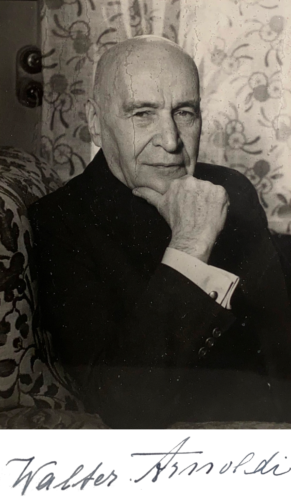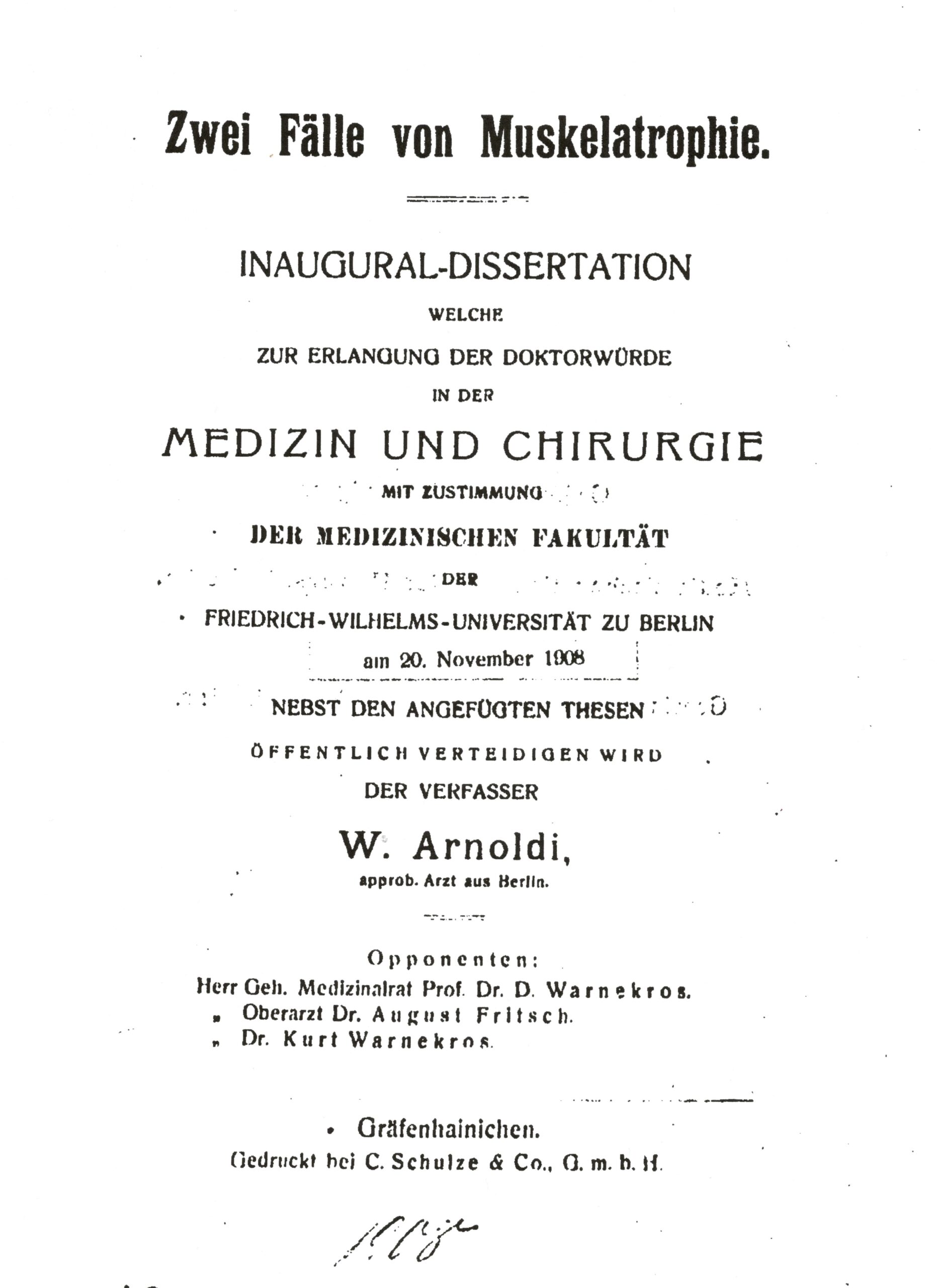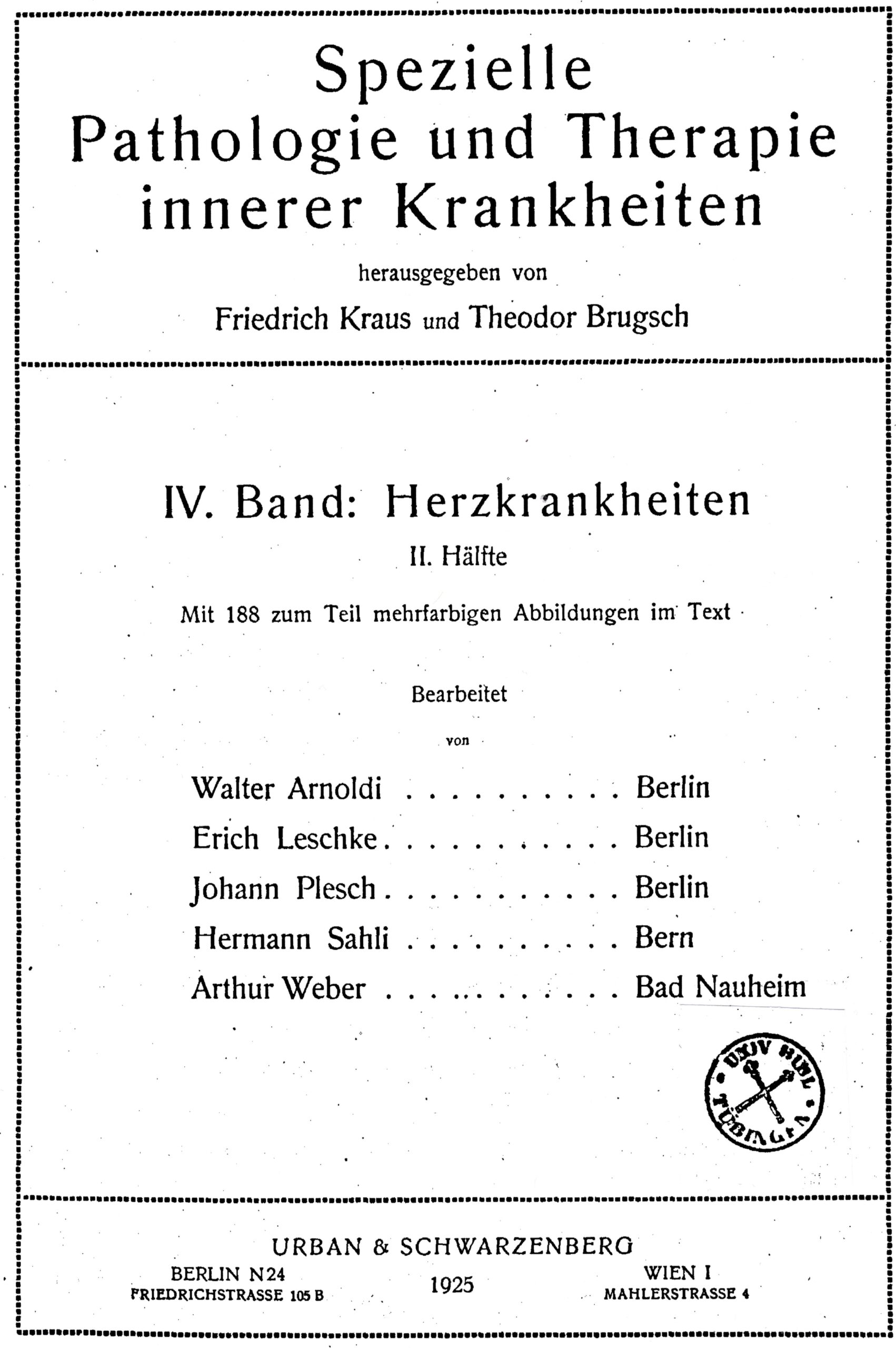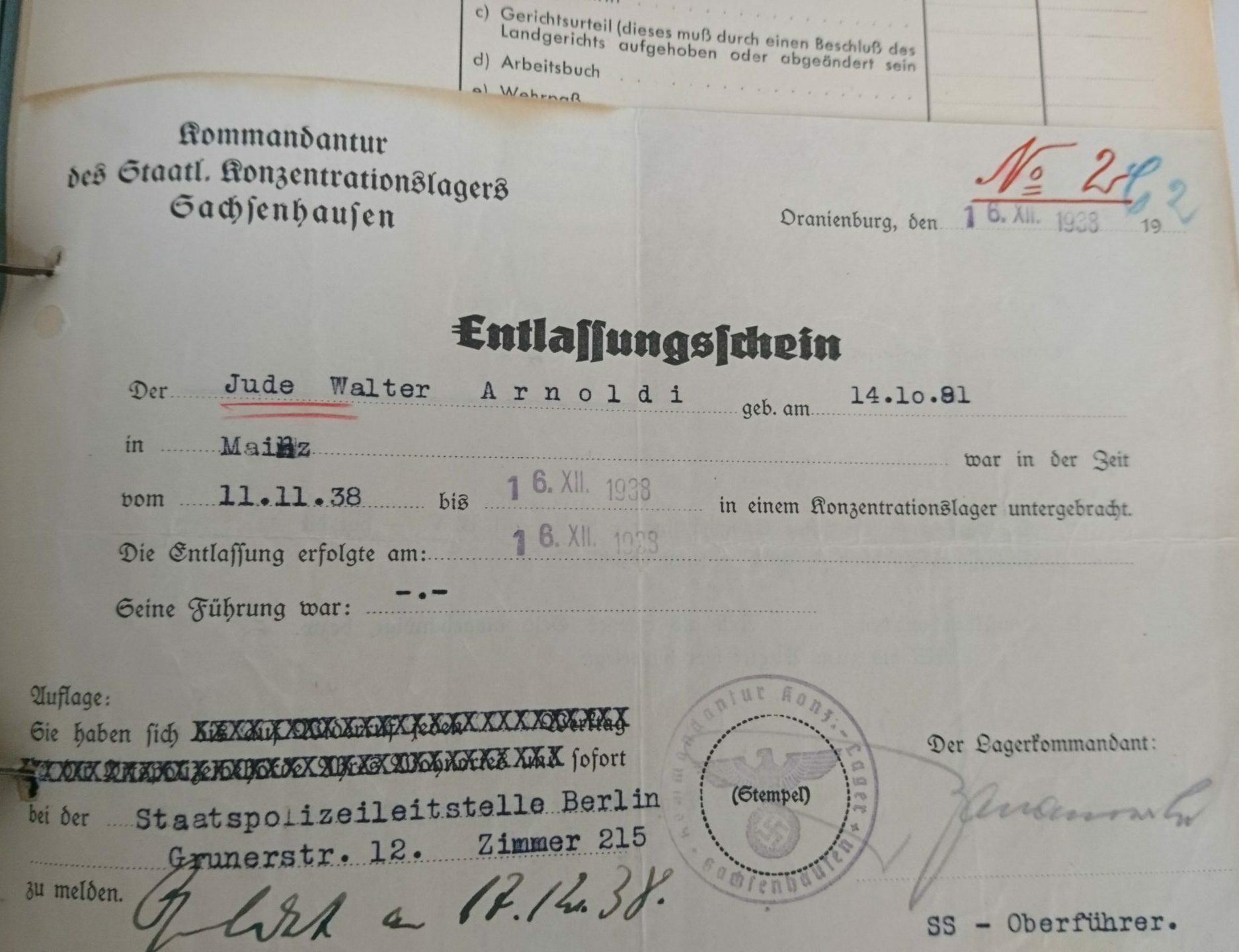Prof. Dr. med. Walter Arnoldi
- Mainz, 14.10.1881
- Copenhagen, 30.01.1960
- Member since 1926
- Escaped to Denmark in 1939
- Berlin
- Specialist in internal medicine
“I, Walter Arnoldi, of Protestant faith, was born in Mainz on 14 October 1881 as the son of the deceased building contractor Leo Arnoldi. After passing my school-leaving examination at the Gymnasium (grammar school) in Darmstadt, I took up my studies at the University of Berlin on Easter 1902, where I studied the entire time, except for one semester in Würzburg. I passed the “Tentamen physicum” (first medical exam) in July 1904 and the medical state examination in July 1907, and sat both exams in Berlin,” Walter Arnoldi states in the curriculum vitae of his dissertation. His mother was Regina Arnoldi, née Bennedik.
Education and Places of Work
Following his state examination, Arnoldi worked as a medical trainee with the internist Hermann Senator at the Charité in Berlin from August 1907 to September 1908. During this time he spent three months in London with the surgeon Victor Horsley. He was awarded his doctorate at the Berlin University on 20 November 1908 with the thesis “Zwei Fälle von Muskelatrophie”. He undertook his training in internal medicine from 1911 to 1914 under Alfred Goldscheider at the Medical-Policincal Institute of the Berlin Charité (the former III Medical University Clinic, which received its former name again in 1919), under Friedrich Kraus at the II Medical Clinic of the Charité from April 1914. He worked under Kraus’ successor Gustav von Bergmann from 1927. Arnoldi habilitated in internal medicine at Berlin University in 1923, and was appointed professor (extraordinarius) of internal medicine in 1927.
Arnoldi mainly researched the function and mechanisms of the heart and circulatory system. He conducted experimental studies on the oxygen consumption of the heart muscle. Further scientific work focused on metabolic diseases.
Arnoldi was appointed head physician of the department of internal medicine at the Protestant Paul Gerhardt Hospital in Berlin on 15 March 1931. He also ran a practice for internal medicine at Hardenbergstrasse 9 in Berlin.
1933
Both Walter Arnoldi’s mother Regina, née Bennedik, a baptised Protestant, and his wife Martha Dorothea, née Schuster, were Jewish. As a so-called “Mischling ersten grades” (Nazi terminology denoting someone with Jewish roots “mongrel of the first degree”), Arnoldi was forced to give up his position as chief physician on 31 May 1933. He subsequently ran a private practice. He was deprived of his licence to teach at the University of Berlin in 1935 on the basis of paragraph 4 of the Reich Citizenship Law, or respectively, on the basis of the first ordinance to this law (“Jews cannot be citizens of the Reich”). He initially remained in Berlin. He lost his licence to practice medicine on 30 September 1938 due to Nazi legislation.
Arnoldi was imprisoned at Sachsenhausen concentration camp until 16 December 1938 immediately following the pogrom in November 1938. He was sentenced to forced labour, contracted a serious illness and had to be treated as an inpatient at Berlin’s Martin Luther Hospital for several weeks after his release from the concentration camp. During this time he was cared for by the internist Fritz Munk.
Escape to Denmark in 1939 and to Sweden
The 57-year-old Arnoldi, his wife, and their daughter Elisabeth fled to Copenhagen in March 1939. Denmark had been under German occupation since April 1940, with Jews being openly persecuted and arrested in 1943. Arnoldi and his family were able to flee to Sweden in time. Arnoldi returned to Denmark after the end of the Second World War and lived in Copenhagen until 1960. Due to his impaired health, he was only temporarily able to take on subordinate tasks at the Rigshospitalet as a research assistant and as an archivist at the psychiatric clinic and the medical polyclinic. Arnoldi, who was 64 years old at the end of the war, had no possibility of resuming his earlier work.
Walter Arnoldi died in Copenhagen in January 1960 at the age of 78. His grave is located on the urn field of Bispebjerg Cemetery Copenhagen.
Acknowledgements
We are very grateful to Axel Bargherr, pastor of the German Reform congregation in Copenhagen, for his guidance and help in finding Walter Arnoldi’s grave and for putting us in touch with the family of Elisabeth Holms, the daughter of Walter and Martha D. Arnoldi.



